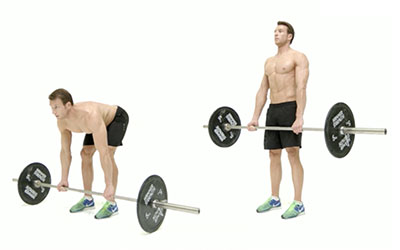Mastering the Art of Weight Training: A Guide to Proper Use of Barbells and Weights
Weight training, using barbells and free weights, is a cornerstone of strength and muscle building for athletes and fitness enthusiasts alike. When performed correctly, it not only enhances muscle size and strength but also improves bone density, metabolism, and overall physical performance. Whether you're a beginner or seasoned lifter, understanding the proper techniques and principles of using barbells and weights is essential for achieving optimal results and preventing injury. Here’s a comprehensive guide to help you master the art of weight training:
Understanding Barbells and Free Weights
1. Types of Equipment:
- Barbells: Long bars with weights attached at each end, used for exercises like squats, bench presses, and deadlifts.
- Dumbbells: Hand-held weights used for various exercises targeting specific muscle groups.
- Weight Plates: Disc-shaped weights that can be added or removed from barbells or dumbbells to adjust resistance.
2. Benefits of Weight Training:
- Increases muscle strength and endurance.
- Enhances bone density and joint stability.
- Boosts metabolism for effective weight management.
- Improves athletic performance and functional strength.
Proper Techniques for Using Barbells and Weights
1. Warm-Up:
- Always begin with a dynamic warm-up to increase blood flow and prepare muscles for exercise.
- Include movements like jogging, jumping jacks, or light sets with minimal weight.
2. Correct Form and Posture:
- Stance and Grip: Maintain a stable stance with feet shoulder-width apart. Grip the barbell or dumbbells firmly but not too tight.
- Spine Alignment: Keep your spine neutral throughout exercises to prevent injury. Avoid rounding or arching excessively.
- Breathing: Inhale before starting the movement and exhale during the exertion phase. Maintain consistent breathing rhythm.
- Controlled Movements: Lower weights slowly and under control to engage muscles effectively and reduce the risk of injury.
3. Progressive Overload:
- Gradually increase the weight lifted as your strength improves to continually challenge muscles and promote growth.
- Aim for progressive overload by increasing resistance or repetitions over time to avoid plateaus in performance.
4. Exercise Variety:
- Incorporate a variety of exercises targeting different muscle groups to achieve balanced muscle development.
- Examples include squats, deadlifts, bench presses, rows, overhead presses, and lunges.
5. Safety Measures:
- Use collars or clips to secure weight plates on barbells to prevent them from sliding off during exercises.
- Ensure the workout area is clear of obstacles to avoid tripping or injury.
- Have a spotter for exercises where heavy weights are lifted, especially during maximal or challenging lifts.
Sample Workout Routine Using Barbells and Weights
1. Lower Body Workout:
- Squats: 3 sets of 8-12 repetitions
- Deadlifts: 3 sets of 8-10 repetitions
- Lunges: 3 sets of 10-12 repetitions per leg

2. Upper Body Workout:
- Bench Press: 3 sets of 8-12 repetitions
- Bent-Over Rows: 3 sets of 8-10 repetitions
- Overhead Press: 3 sets of 8-12 repetitions

3. Full-Body Workout (Circuit):
- Perform each exercise consecutively with minimal rest between sets.
- Squats, Bench Press, Bent-Over Rows, Lunges, and Overhead Press for 3 rounds.
Conclusion
Mastering the proper use of barbells and weights requires practice, patience, and attention to technique. By incorporating these guidelines into your weight training regimen, you can maximize muscle gains, enhance strength, and reduce the risk of injury. Remember to start with lighter weights to focus on form and gradually increase resistance as you gain confidence and strength. With dedication and consistency, weight training with barbells and free weights can transform your physique and overall fitness level for the better.

